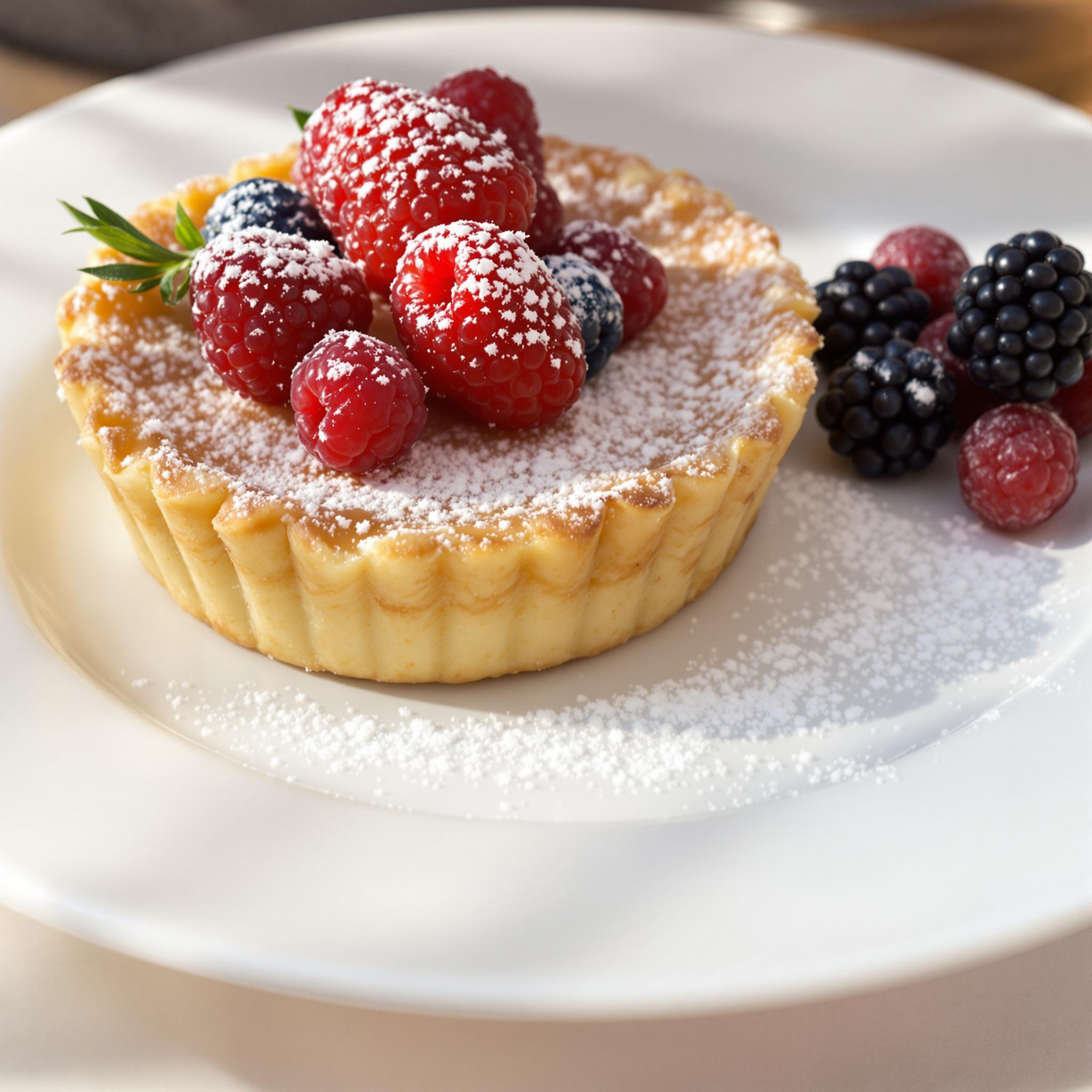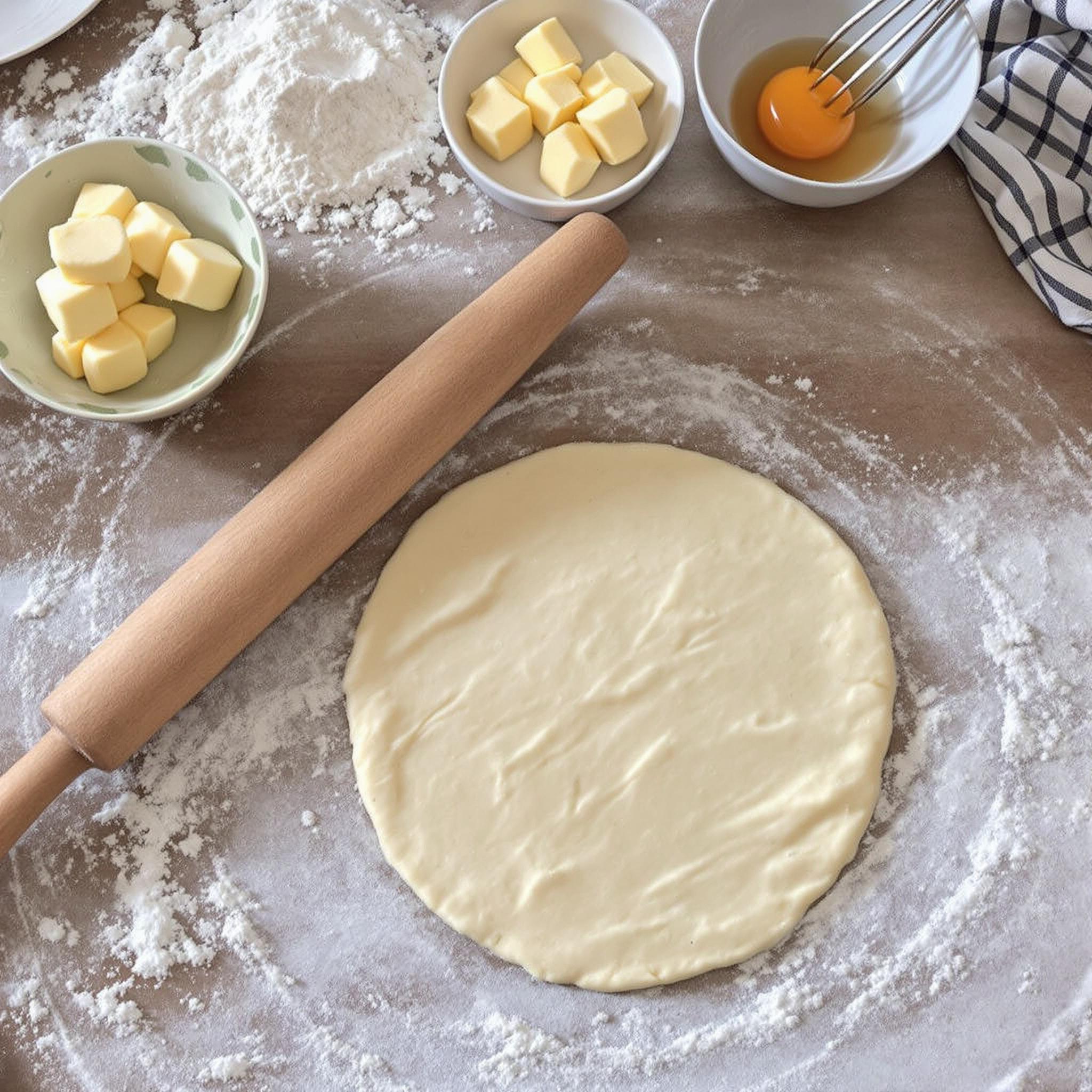
Discover the Magic of Pâte Sablée: A Versatile and Irresistible Treat
There’s something truly magical about the buttery, crumbly texture of Pâte Sablée. Whether you’re baking tarts, cookies, or even a savory pie crust, this classic French shortcrust pastry is your ticket to culinary greatness. I remember the first time I made it—it was for my mom’s birthday, and I wanted to create a dessert that felt special. The result? A golden, perfectly crisp crust that held its own against the creamy filling. Ever since, Pâte Sablée has been my go-to recipe for all kinds of occasions.
The Origins of Pâte Sablée: A Timeless French Classic
Pâte Sablée, which translates to “sandy dough” in French, dates back to traditional French baking. Its name comes from its delicate, sandy texture when rolled out. Historically, it was used as a base for fruit tarts and elegant desserts served at royal courts. Over time, home bakers adopted it, making it a staple in kitchens worldwide. What makes it so special is how adaptable it is—you can use it for sweet or savory dishes, making it perfect for modern cooks like you and me!
Why You’ll Love This Pâte Sablée Recipe
If you’ve ever struggled with pastry dough, fear not—this recipe is foolproof! It’s simple enough for beginners but refined enough to impress seasoned bakers. The rich, buttery flavor shines through every bite, while its crumbly texture adds a delightful contrast to creamy fillings. Plus, once you master this sweet shortcrust pastry, you’ll find endless ways to use it, from mini tartlets to full-sized quiches.
Perfect Occasions to Prepare Pâte Sablée
This versatile dough is ideal for any gathering. Whip up a batch for a cozy afternoon tea party, a festive holiday dessert table, or even a casual weekend brunch. It’s also perfect for potlucks or family dinners where everyone appreciates homemade goodness. Whether you’re serving mini tarts or a single show-stopping tart, this recipe will leave your guests asking for seconds.
Ingredients for Your Perfect Pâte Sablée
- 2 cups (250g) all-purpose flour
- 1/2 cup (100g) granulated sugar
- 1/4 teaspoon salt
- 1 cup (226g) unsalted butter, cold and cubed
- 1 large egg yolk
- 1-2 tablespoons ice water
Substitution Options for Flexibility
Not everyone has the same pantry staples, and that’s okay! Here are some easy swaps:
- Use gluten-free flour instead of all-purpose if you need a gluten-free shortcrust pastry.
- Swap coconut oil for butter for a dairy-free version.
- Replace granulated sugar with powdered sugar for an even finer texture.
These tweaks ensure anyone can enjoy this delicious Pâte Sablée recipe.
Step-by-Step Preparation Guide
Step 1: Combine Dry Ingredients
Start by whisking together the flour, sugar, and salt in a large mixing bowl. This ensures your dry ingredients are evenly distributed before adding the fat. As you mix, imagine the subtle sweetness of the sugar blending seamlessly into the earthy aroma of the flour—it sets the stage for what’s to come. Pro tip: Sift the flour and sugar for an extra smooth dough.
Step 2: Cut in the Butter
Add the cold, cubed butter to the dry mixture. Using a pastry cutter or your fingertips, work the butter into the flour until the mixture resembles coarse sand. This step is crucial because the cold butter creates those irresistible pockets of flakiness during baking. Take your time here—the colder the butter, the better the texture of your finished Pâte Sablée.
Step 3: Add Egg Yolk and Water
Create a well in the center of your mixture and add the egg yolk along with a tablespoon of ice water. Gently mix until the dough begins to come together. If needed, add another tablespoon of water—but be careful not to overwork the dough. The goal is to achieve a soft, pliable dough that holds its shape without becoming sticky.
Step 4: Chill the Dough
Once your dough is formed, flatten it into a disc, wrap it tightly in plastic wrap, and chill it in the refrigerator for at least 30 minutes. Chilling relaxes the gluten and firms up the butter, ensuring your sweet shortcrust pastry bakes beautifully. While it rests, take a moment to savor the anticipation—it’s almost time to bake!
Chef’s Tip: How to Achieve Perfection
To elevate your Pâte Sablée, try grating frozen butter directly into the flour instead of cubing it. This technique distributes the butter more evenly, resulting in an even lighter and flakier crust. Trust me, it’s worth the effort!
Time Breakdown for Your Baking Adventure
- Preparation Time: 15 minutes
- Resting Time: 30 minutes
- Baking Time: 15-20 minutes
- Total Time: Approximately 1 hour
Nutritional Information
Per serving (based on 8 servings):
- Calories: 250 kcal
- Protein: 3g
- Fat: 15g
- Carbohydrates: 25g
- Sugar: 10g
Enjoy guilt-free indulgence in moderation!
An Interesting Curiosity About Pâte Sablée
Did you know that Pâte Sablée is often referred to as “the queen of pastries” in French culinary circles? Its delicate balance of sweetness and richness makes it a favorite among professional chefs and home bakers alike.
Necessary Tools for Success
- Pastry cutter or fork
- Mixing bowls
- Rolling pin
- Parchment paper
- Baking sheet or tart pan
Storage Instructions for Your Pâte Sablée
Storing your baked goods properly ensures they stay fresh longer. Once cooled, wrap individual portions in parchment paper and place them in an airtight container. They’ll last up to three days at room temperature. For longer storage, freeze the unbaked dough for up to three months. Simply thaw overnight in the fridge before rolling it out.
If freezing baked goods, layer slices between sheets of parchment paper to prevent sticking. When ready to serve, reheat briefly in the oven to restore crispiness.
Remember, proper storage keeps your Pâte Sablée creations tasting as good as the day you made them!
Tips and Tricks for Perfect Results
- Always keep your ingredients cold—this is key to achieving that flaky texture.
- Don’t skip the chilling step; it prevents shrinkage during baking.
- Use a light touch when rolling out the dough to maintain its structure.
Serving Suggestions to Wow Your Guests
- Fill with lemon curd and top with fresh berries for a vibrant dessert.
- Pair with a dollop of whipped cream and seasonal fruits for an elegant presentation.
Healthier Alternatives for Your Pâte Sablée
Looking to lighten things up? Try these variations:
- Whole Wheat Version: Substitute half the all-purpose flour with whole wheat for added fiber.
- Low-Sugar Option:
- Vegan Twist: Use plant-based butter and flaxseed meal mixed with water instead of egg yolk.
- Spelt Flour Swap: Experiment with spelt flour for a nuttier flavor profile.
- Honey Sweetened: Replace granulated sugar with honey for natural sweetness.
- Nutty Addition: Incorporate almond flour for a richer taste and softer texture.
Common Mistakes to Avoid
Mistake 1: Overworking the Dough
Overworking the dough develops too much gluten, leading to a tough rather than tender crust. To avoid this, handle the dough as little as possible and stop mixing once it just comes together.
Mistake 2: Skipping the Chill Time
Rushing the process by skipping the chilling step can cause the butter to melt prematurely, ruining the flaky layers. Always let the dough rest—it’s worth the wait!
Mistake 3: Adding Too Much Water
A common error is adding too much liquid, which makes the dough sticky and difficult to roll out. Add water one tablespoon at a time, testing the consistency as you go.
Frequently Asked Questions About Pâte Sablée
Can I make Pâte Sablée ahead of time?
Absolutely! You can prepare the dough up to three days in advance and store it in the fridge. Just let it sit at room temperature for 10 minutes before rolling it out.
What’s the difference between Pâte Sablée and Pâte Sucrée?
While both are sweet pastry doughs, Pâte Sablée has a coarser texture due to the higher butter content, whereas Pâte Sucrée is smoother and slightly sweeter.
Can I freeze the dough?
Yes, you can freeze the dough for up to three months. Wrap it tightly in plastic wrap and thaw overnight in the fridge before using.
How do I prevent my crust from shrinking?
Chill the dough thoroughly before baking and prick the bottom with a fork to release steam during baking. These steps help prevent shrinkage.
What fillings pair well with Pâte Sablée?
Fruit fillings like raspberry jam, custards, or chocolate ganache complement the buttery crust beautifully.
Is Pâte Sablée gluten-free?
Traditional recipes aren’t, but you can easily adapt it by using gluten-free flour blends.
Why does my dough feel too dry?
It might need a bit more water. Add it sparingly, one teaspoon at a time, until the dough holds together.
Can I use this dough for savory dishes?
Definitely! Simply omit the sugar and add herbs or spices for a savory twist.
How do I know when my crust is done baking?
Your crust should be golden brown around the edges and firm to the touch. Underbaked crusts may feel soft or soggy.
What tools do I need to roll out the dough?
A rolling pin and a lightly floured surface are essential. Alternatively, place the dough between two sheets of parchment paper for easier handling.
Conclusion
With its buttery goodness and endless versatility, Pâte Sablée is a must-have in every baker’s repertoire. From elegant tarts to comforting pies, this classic French pastry opens the door to countless culinary adventures. So grab your apron, gather your ingredients, and let’s get baking—you won’t regret it!

Equipment
- Pastry cutter
- Mixing bowl
- Rolling pin
- Parchment paper
- Tart pan
Ingredients
- 250 g all-purpose flour
- 100 g granulated sugar
- 226 g unsalted butter, cold and cubed
- 1 large egg yolk
- 2 tbsp ice water add as needed
- 1/4 tsp salt
Instructions
- Whisk together flour, sugar, and salt in a large mixing bowl.
- Add cold cubed butter and cut into flour using a pastry cutter until mixture resembles coarse sand.
- Create a well in the center, add egg yolk and 1 tbsp ice water, mix until dough begins to form. Add another tbsp water if necessary.
- Shape dough into a disc, wrap in plastic, and chill for at least 30 minutes.


